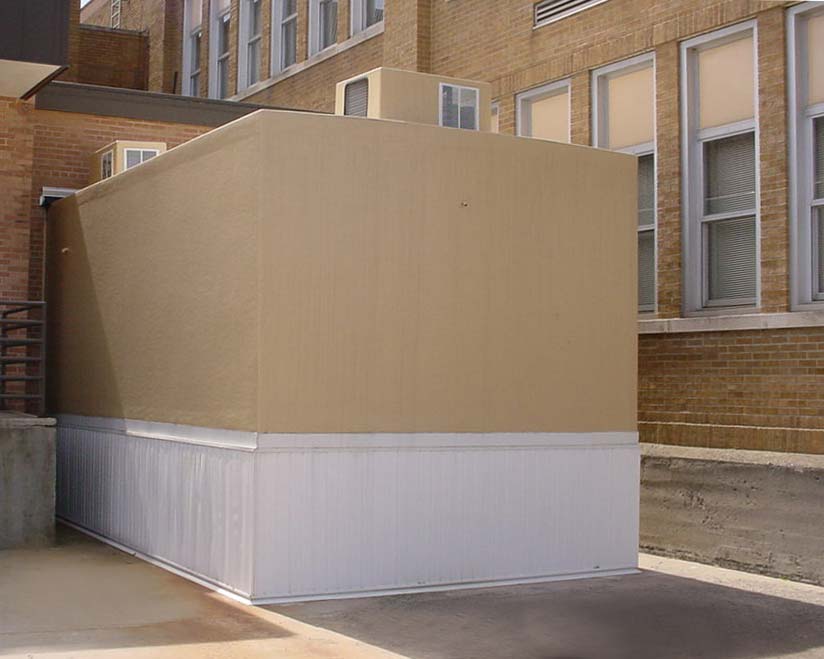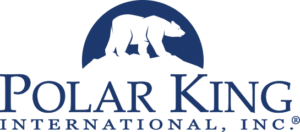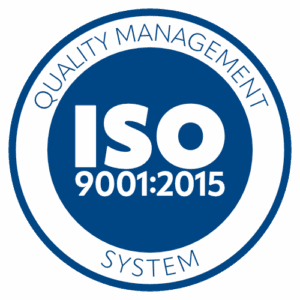 When choosing a walk in cooler or freezer, school nutrition directors face unique considerations that set them apart from restaurants and other foodservice operations. They must evaluate the storage capacity needed to serve their student population while also planning for future growth as enrollment and menu options expand, all while ensuring efficiency and compliance with school nutrition standards.
When choosing a walk in cooler or freezer, school nutrition directors face unique considerations that set them apart from restaurants and other foodservice operations. They must evaluate the storage capacity needed to serve their student population while also planning for future growth as enrollment and menu options expand, all while ensuring efficiency and compliance with school nutrition standards.
To simplify the decision-making process, we’ve outlined some key factors school nutrition directors should consider when selecting a walk in cooler or freezer.
Sizing, storage and configuration for K-12 schools
Choosing the right size and configuration for a school walk in cooler or freezer starts with assessing student enrollment and the number of meals served daily. Schools often require more freezer space than cooler space, typically in a 30/70 ratio, to accommodate frozen bulk orders.
Since school cafeterias rely on large food shipments to meet daily menu demands, storage capacity should align with delivery schedules and the availability of food commodities. Schools that can store extra bulk inventory not only ensure a steady food supply but may also take advantage of cost-saving opportunities by purchasing in larger quantities when deals arise. When planning storage, it’s important to evaluate whether additional cooler space is needed for fresh produce, dairy and other perishable items to maintain food quality and safety.
To calculate your storage needs, start with this formula, then fine-tune for your delivery schedule or particular needs:
| Metric | Rule of thumb | Example: 800 meals/day |
|---|---|---|
| Freezer volume | 0.5 cu ft per meal | 0.5 × 800 = 400 cu ft |
| Cooler volume | 0.2 cu ft per meal | 0.2 × 800 = 160 cu ft |
| Typical mix | 30 % cooler / 70 % freezer space | Mirrors bulk USDA commodity deliveries |
Need help with the math? Contact our team of experts today.
What about colleges and universities?
Campus dining often operates 24/7 and serves ten-times the meal volume of a typical high school, so freezer capacity must scale accordingly. Polar King’s modular buildings can exceed 1,000 sq ft, accept roll-up doors for pallet drops, and tie into campus building-automation systems—ideal refrigeration for schools and universities that never close.
Installation and facility challenges
Deciding between an indoor or outdoor walk in cooler for your school depends on available space. Installing a unit outdoors can free up valuable kitchen space for food preparation. Older school buildings often face infrastructure challenges, as they were not designed for modern enrollment levels. As a result, many schools are now repurposing former indoor walk in spaces for food production and moving their refrigeration units outside.
Keep in mind, outdoor walk in installations require careful planning to account for factors like placement, exposure to the elements and accessibility for deliveries and kitchen staff. Durability is also an important consideration, as units must withstand varying weather conditions while maintaining proper insulation and efficiency.
Workflow, safety and staff considerations
With a mix of experienced and rotating staff, schools benefit from user-friendly walk in freezers and coolers. Working with a knowledgeable partner like Polar King can make a significant difference in designing a layout that best fits your operation’s needs. From considering high-traffic zones to ensuring easy access to frequently used ingredients, a well-planned walk-in setup enhances efficiency and minimizes disruptions.
Safety is also a priority, with features like non-slip flooring, proper lighting and emergency door releases required for all school walk-in freezers. A well-designed walk-in not only supports smooth operations but also helps create a safer environment for kitchen staff.
Energy efficiency and cost savings
Schools should purchase walk in coolers that meet Annual Walk In Energy Factor (AWEF) standards and comply with the Energy Independence and Security Act to ensure long-term energy savings. It’s important to note refrigeration manufacturers are responsible for certifying that their equipment meets compliance standards before it is produced and sold. However, the responsibility also extends to those assembling and installing the system, ensuring that only certified equipment is used for both retrofitting existing setups and new installations.
Walk in coolers and freezers can be a massive contributor to energy costs, so selecting an energy-efficient unit is extremely important. To help offset some of the costs incurred, schools may benefit from USDA grants or local energy-efficiency incentives.
Funding & procurement resources
Speaking of cost savings, securing a school freezer or cooler is as much a finance project as an equipment procurement project. The following resources should be considered by a school or district weighing an upgrade of their walk-in refrigeration:
USDA NSLP Equipment Assistance Grants: Awards of $1,000 or more can cover capital costs for walk-ins that improve food safety or expand School Breakfast participation.
ESSER & GEER relief funds: Federal pandemic-relief programs allow districts to purchase infrastructure (including kitchen equipment) when the spend supports student health or instructional continuity.
Utility rebates for high-efficiency systems: Many utilities offer $500 to $1,500 incentives for ENERGY STAR® or AWEF-qualified condensing units; check local programs via the ENERGY STAR Rebate Finder.
Buy-American and cooperative-purchasing rules: Polar King units are available on both the Sourcewell cooperative contract and the GSA Multiple Award Schedule, simplifying compliance with domestic-content requirements.
Pro tip: Bundle installation, remote monitoring, and a multi-year preventive-maintenance agreement into the original RFP so grant dollars cover the full life-cycle cost.
Food safety and compliance
As in any food service operation, maintaining proper food temperatures is required for food safety. Schools can enhance compliance by choosing a walk in freezer that comes equipped with electronic temperature monitoring systems with alarms, such as KE2 and E-Controls, or by integrating monitoring into the school’s security system. These tools help ensure that temperature fluctuations are quickly addressed, preventing spoilage and health risks.
Schools should follow food safety and HACCP guidelines for proper food placement, especially in coolers, to prevent cross-contamination. Regularly dating and rotating products helps maintain inventory efficiency.
Durability and maintenance
School walk in coolers should be built to withstand daily use in high-volume foodservice settings. Walk in freezers for schools should be built to withstand daily use in high-volume foodservice settings. Given the demands of a busy school kitchen, choosing a unit that arrives fully assembled and factory-tested can simplify installation and ensure reliable performance from day one. For instance, all Polar King units are rust-proof, dent-resistant and designed for long-term durability in challenging environments.
Regular preventative maintenance, temperature monitoring with alerts and backup refrigeration solutions, such as refrigerated trailers, can help schools avoid costly disruptions.
Customization and special features
Customization is key to meeting the specific needs of school foodservice programs. Polar King walk in refrigeration units are made to order, with one-piece, weatherproof designs that provide superior insulation and durability. Schools can choose custom exterior colors and benefit from units that can be relocated for renovations or expansions.
Success spotlight: Custom walk-in for FL elementary school
K-12: Largo, FL Elementary (16 × 30 ft Combo Unit)
Configuration: through-wall school cafeteria freezer + cooler combo
Highlights: brick-patterned Architectural Series exterior, hurricane tie-down kit, Miami-Dade approval for coastal wind loads.
Result: Seamless fiberglass construction cut on-site installation time to one day, letting the kitchen pass health inspection a week early.
See the full case study here.
By carefully considering size, installation, workflow, energy efficiency, safety and durability, school nutrition directors can rest assured they are investing in a walk in cooler or walk in freezer that meets their immediate needs while supporting long-term operational success. Contact Polar King today for more information or to get started on the purchasing process for your school!





